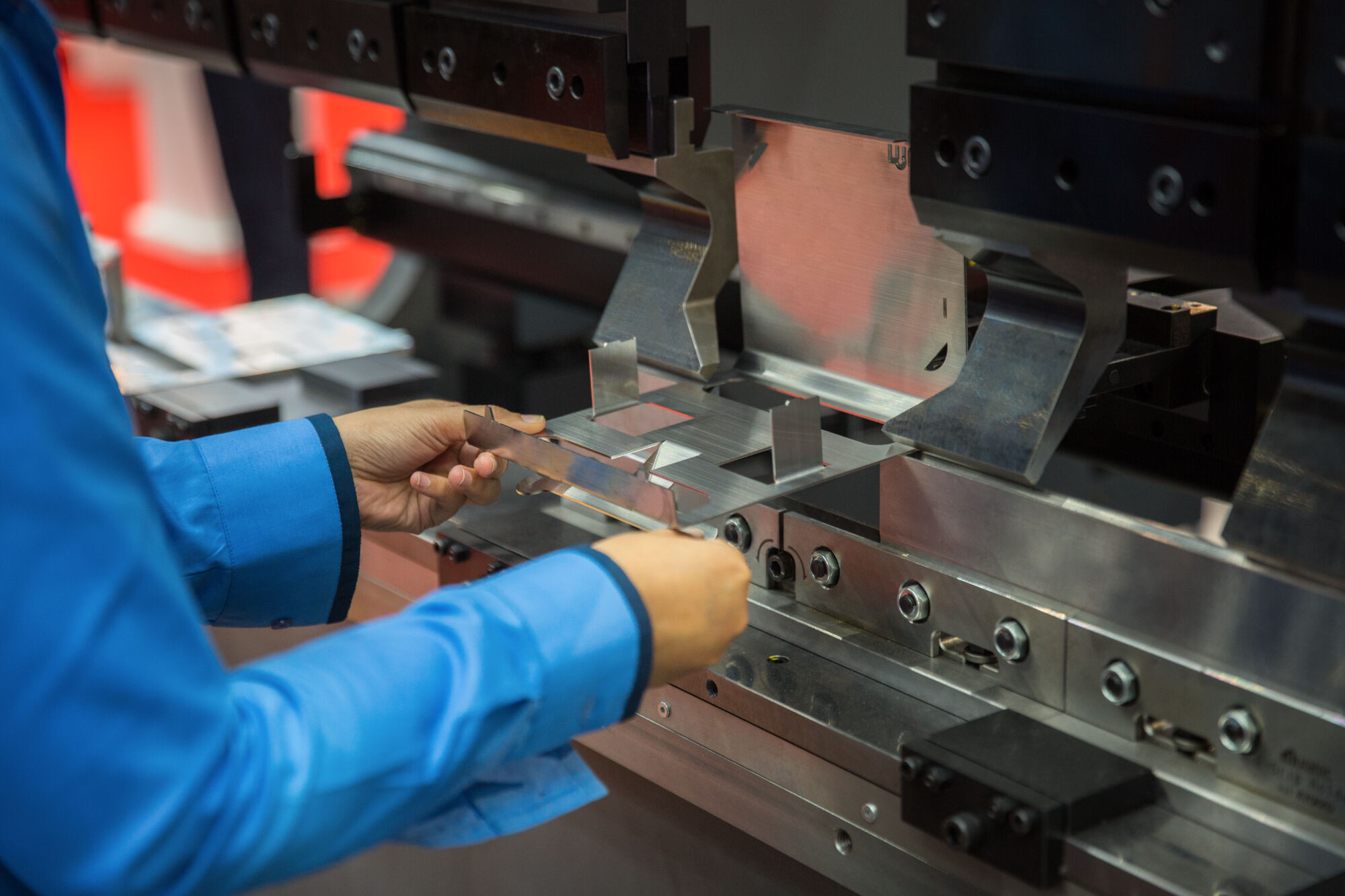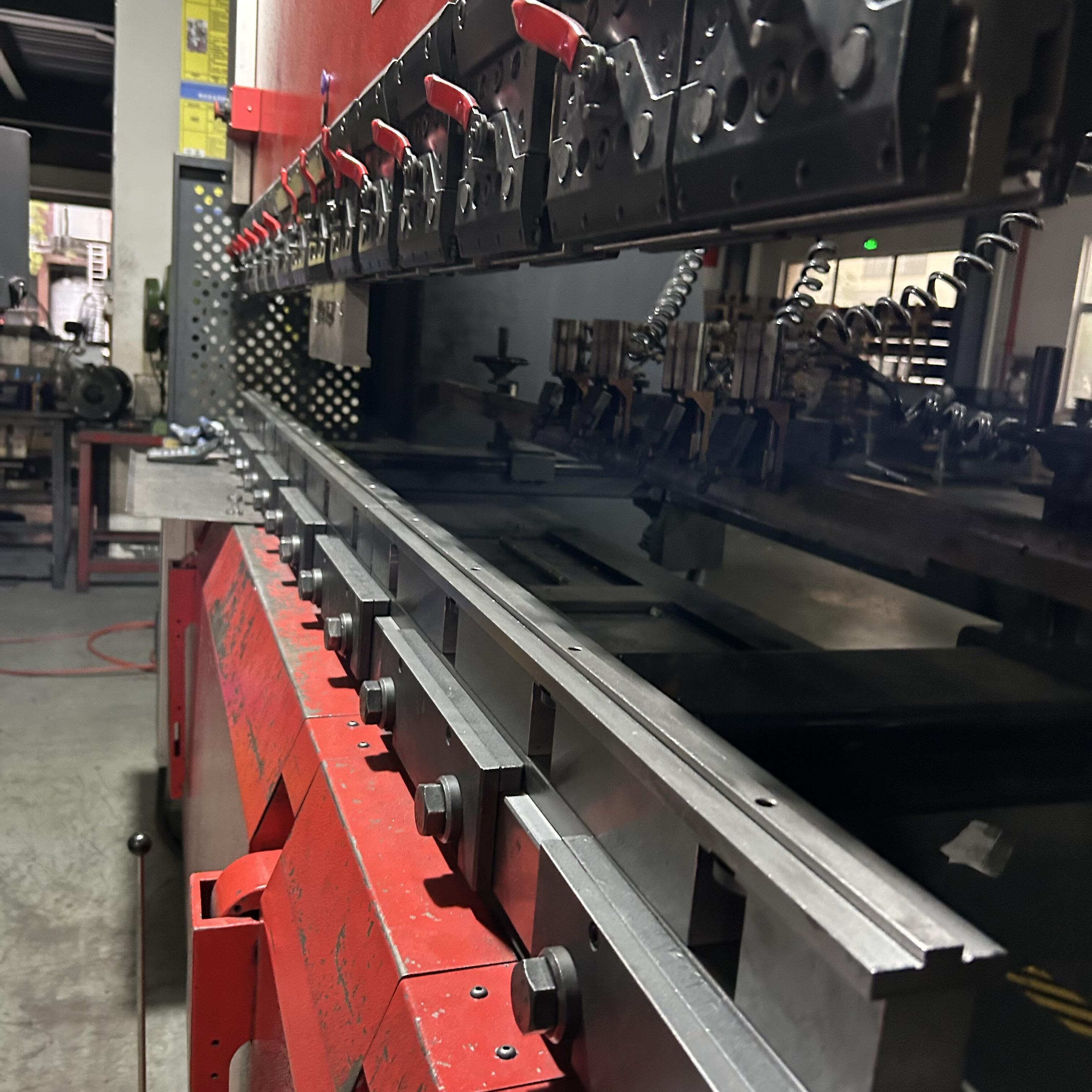You can upload your design documents or machining requirements in this area to see instant pricing, delivery times and shipping times will have professional engineers feedback with you. Starway With dozens of machining processes, including CNC machining, metal welding, sheet cutting and injection molding, the Starway factory can provide you with a one-stop customized machining solution.
Sheet metal forming or bending is a common metalworking technique that uses external force to deform flat metal sheets into V, U, or groove shapes. This process is more cost-effective than machining or casting from solid materials and more stable than welding, as the product remains a single piece. Various methods and machines, such as press brakes and roll benders, are used to achieve different angles and shapes.

The advantages of our sheet metal forming process
The bending process can achieve high-precision size and Angle control, by adjusting the parameters of the bending machine (such as pressure, Angle, mold type), you can precisely control the degree of deformation to ensure the consistency of the product.
By bending the metal to the specified requirements, our bending process makes full use of the bent material and reduces waste, thereby reducing production costs. And the excess materials can be recycled and reused, reducing the overall production cost.
Our bending process can completely produce complex shapes according to your design requirements, meet the needs of different products can also design a variety of bending angles and curves, improve the beauty and functionality of the product.
Our bending machine can improve labor efficiency and simple operation after CNC programming. It can not only process continuously for 24 hours, but also quickly replace the bending mold in the bending machine. It is suitable for mass production of products in a short time, so as to improve production efficiency.
Sheet metal bending strength compared with welding, bending strength is higher than welding, mainly reflects the strength of bending advantages are the following aspects: material rebound, bending Angle, local thickening, stress distribution, connection mode and so on.
The advantages of simple subsequent processing of sheet metal bending are mainly reflected in these aspects, 1 the convenience of welding can make the bending product produce better weld strength during welding. 2 High assembly efficiency, the bending product is usually combined with other products, usually the bending product will simplify the assembly process. 3 More flexible, if you need to fine-tune a part, only need to re-adjust a small part of the line.
Following the parameter standards in the following table will be more convenient in the early communication and post-processing
|
Maximum Bend Length |
47 in. |
|
Minimum Qualifying Part Size |
0.05 in x 0.05 in (12.7mm x 12.7mm) for formed parts |
|
Maximum Pressing Force |
80 tons |
|
Bend Angles |
1 degree ‘kick’ to 135 degrees |
|
Bending Output |
Linear bends—external and internal flanges |
|
Maximum U-Channel Ratio |
2:1 (width:height) |
|
Internal Radius Tooling Options |
0.01 in. to 1 in. (standard tooling increments) >1 in. radius bends will be bump formed
|
|
Offsets |
Standard offset tooling sizes |
|
Hems |
Closed hems up to 47 in., open hems up to 36 in. |
|
Best way to cooperate |
Provide detailed CAD drawings or detailed operating parameters contact us for the shortest machining cycle time and a quote to ensure the description of the bend is consistent with the operating details |
Following the parameter standards in the following table will be more convenient in the early communication and post-processing
|
Material |
Grade |
Thicknesses Available |
|
Aluminum |
|
|
|
Steel |
|
|
|
Stainless Steel |
|
|
|
Copper |
|
|
|
Brass |
|
|
Obtain An Instant Quote by uploading a 3D CAD file (including STEP, STP, SLDPRT, DXF, IPT, PRT, or SAT formats) through our Instant Quoting Engine.
Starway are proud of the core advantages that make the customers’ job easier, faster and more saving.
Dedicated service teams will be established for each project. (Pre-sales Team+ Pre-sales Engineers. )
1.Design Support: Offers 3D modeling, optimization, and prototyping.
2.Material Selection: Provides various material options and customization.
3.Fabrication Processes: Includes laser cutting, stamping, bending, and welding.
4.Assembly: Offers insert installation, riveting, and full assembly.
5.Surface Treatment: Provides painting, plating, and polishing services.
6.Quality Inspection: Ensures compliance with dimensional and functional tests.
7.Packaging and Logistics: Ensures safe packaging and timely delivery.
8.After-Sales Service: Offers technical support and quality tracking.
Rapid new product development:3 days prototype manufacturing
From the initiation meeting and confirmation of drawings to the first piece inspection, mid-term quality reports, and final product inspection, every step efficient execution. Offer order reports at least twice a week offer SOP operation manuals for batch orders Comprehensive quality inspection reports
Obtain An Instant Quote by uploading a 3D CAD file (including STEP, STP, SLDPRT, DXF, IPT, PRT, or SAT formats) through our Instant Quoting Engine.

Metal bending is an advanced processing technology with high precision, high efficiency and strong adaptability. Mainly used in the following fields:
Components such as doors, roof and side walls are bent to form complex shapes that increase impact resistance, reduce weight and improve fuel efficiency.
Chassis brackets and structural components increase rigidity and ensure vehicle stability and safety in various road conditions.
Interior components such as the dashboard and door panel brackets are designed to increase comfort and aesthetics through bending.
Bent pipes increase exhaust efficiency, reduce vibration and noise, and enhance overall performance.
In electric vehicles, sheet metal bending is used to create battery pack casings that provide protection and heat dissipation.
Used to make equipment shells, such as computer cases, home appliance shells, etc., to protect internal components and provide structural support.
Such as display bracket, server bracket, etc., by bending to form a stable support structure, improve the stability of the device.
Bent metal can be used to make heat sinks to improve heat dissipation performance and ensure the normal operation of electronic devices.
Sheet metal bending technology is used to manufacture the housing of electrical connectors, providing mechanical strength and protection.
Such as circuit board brackets and fasteners, improve the fixing and arrangement of internal components through bending design.
Used to fabricate equipment enclosures and frames to protect internal components and provide strength support.
Such as machine bases and support structures, with bending technology to enhance stability and load-bearing capacity.
Bent metal is used to create safety covers that protect operators and equipment from damage.
Such as connecting parts and connecting brackets, which are bent to improve the connection strength and ensure the reliability of the mechanical device.